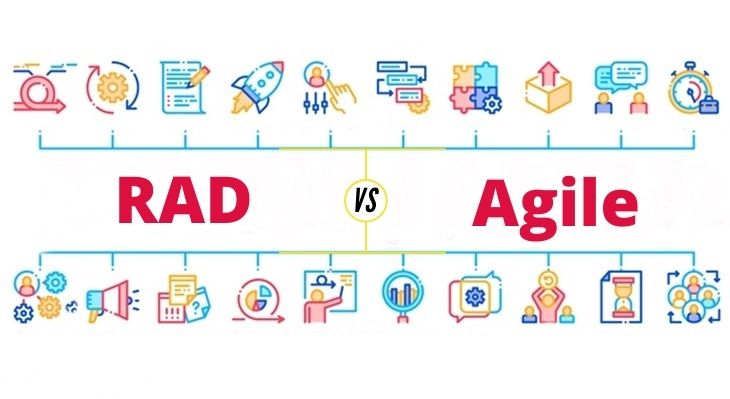In search of agility and quality in software development, there are methodologies that are capable of enhancing the performance of the professionals involved in its processes.
For this reason, companies have increasingly adopted these methodologies so that they help them achieve their goals.
In this article, we’ll highlight the difference between the two most popular software development methodologies Rapid Application Development and Agile.
Rapid Application Development in a Nutshell
The Rapid Application Development (RAD) model is an agile development method designed for fast response and high-quality results.
Unlike the Waterfall approach, RAD focuses on processes rather than design. RAD uses existing code, redirected models, and proven processes to create new software prototypes.
This makes the Rapid Application Development model a versatile, adaptable, and time-saving option for software developers and web applications.
The Rapid Application Development model is best suited in scenarios that require the development of new applications within a span of two to three months.
However, one must keep in mind that, to develop anything on a RAD platform, the requirements must be well defined.
Agile Methodology in a Nutshell
Agile methodologies respond to the IT sector’s need for more agile deliveries for its customers, adapting the company to modernity.
The objective is to generate dynamic and flexible projects, with a profound change in the culture and vision of managers and members of internal teams.
Focused on a more dynamic approach model, with agile methodology, the development of processes is aligned to a collaborative program, focused on speed and flexibility.
The agile methodology employs intelligent software, with a wide capacity to act. The professionals, as well as the tools, operate in an interactive way, with great participation of the team in the tasks.
The minimum functionalities can be delivered to customers before the total closure of the project, and can even be scaled in stages or partial deliveries.
Such a procedure facilitates the intelligent resolution of programs, also avoiding errors and failures resulting from the process.
Also Read: Pros and Cons of Scrum: You Should know
Rapid Application Development vs. Agile: Other Key Differences
The rapid development of applications emphasizes rapid prototyping rather than more expensive planning, in contrast to Agile’s focus on production time.
While RAD and Agile emphasize initial software delivery and continue to meet changing requirements, even in late development, Agile goes a step further prescribes its methods, work environments, and ideals.
Thus, we can conclude that the RAD methodology is much more malleable, emphasizing the quality results exactly and in the time they are delivered, without any major rules.
Agile is a term that the IT industry uses to describe a unique method of project management.
Its goal is to help teams in providing quick and unpredictable responses to the feedback they receive, but their development is a little longer.
when designing a job within a tight timeframe, the use of RAD is the most appropriate choice, as you will produce from a perspective that aims at instant actions and results.
Agile’s culture differs from other forms of work, as its focus is on the people who are working and the way they work together.
The aim is for solutions to evolve through collaboration between multifunctional teams, using the appropriate practices for their context.
You may also like to read:

